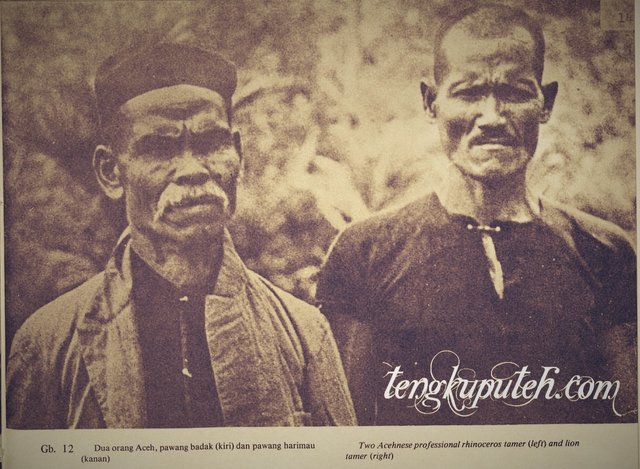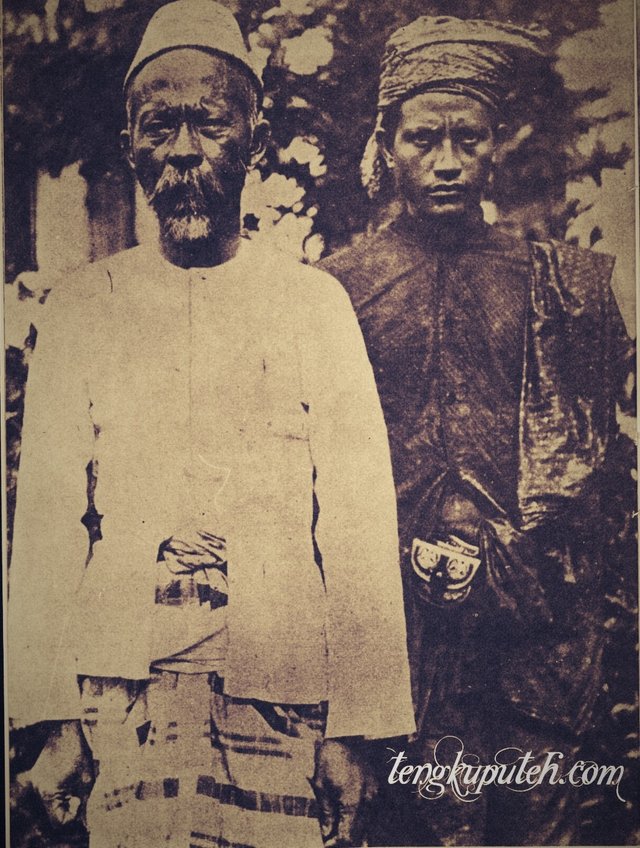ACEHNESE IN SUMATRAN HISTORY


History of Sumatra written by William Marsden, F.R.S published by T. Payne & Son in 1811.
ACEHNESE IN SUMATRAN HISTORY
A British researcher and explorer William Marsden began observing the island of Sumatra in 1771. He succeeded in revealing things that had not been revealed before, his book, The History of Sumatra was a major work in the 18th century which was written based on research and observation that was classified as sophisticated at that time.
William Marsden wrote his impression when opening chapter 21 about Aceh, "Aceh is the only kingdom in Sumatra that has ever achieved political influence for the western nation so that the historical record becomes a general subject. However, the current conditions are very different from the conditions when they succeeded in preventing Portuguese forces from setting foot in Sumatra and their princes received ambassadors from all major nations in Europe."

Teuku Imuem Lueng Bata (sitting to the right) and Teuku Kali Malikon Ade (sitting to the left) as the representative of the representative of the Aceh Darussalam Sultanate in an effort to explore the possibility of obtaining weapons assistance in Penang. This photo was taken in 1858 before the Aceh War broke out in 1873.
Marsden, on the one hand, recognizes the glory of Aceh's past history, but on the one hand also observes that at the end of the 18th century, the Aceh Darussalam Sultanate experienced a decrease in strength, influence, and its light had dimmed.

Typical Acehnese (men) in the late 19th century AD.

Typical Acehnese (Women) in the late 19th century AD.
Regarding the Acehnese population, Marsden wrote; "The physical characteristics of Acehnese are very different from other Sumatran people. They are usually taller, more muscular, and their skin is darker. This does not mean that they represent the physical characteristics of the indigenous people, but based on various reasons, it can be assumed that it is a mixture of Batak people and Malays with Chulia people, people who they call the people of western India (present-day Pakistan) who have often visited the ports of Aceh.
In terms of their character, they are more active than some other indigenous people. They are wiser, have knowledge of other countries, and as traders, they transact on broader and liberal principles. However, observations of these principles are mostly carried out on traders who are far from the capital city and to their writings rather than observations made in Aceh based on character and examples of the actions of the ruling king is often narrow-minded, blackmailed, and oppressive.

Two Acehnese, rhinoceros tamer (left) and tiger tamer (right).
Their language is one of the dialects commonly used in the eastern islands and its similarity to the Batak language can be seen in the comparison table. However, they still use Malay characters.

Since childhood, the people of Aceh have been given religious lessons. As the picture at the end of the 19th century AD shows a group of children with the teacher reciting the Qur'an.
In terms of religion, they embrace Islam and have many scholars. They interact a lot with foreigners who are also Muslims. The forms of worship and ceremonies are carried out quite strictly on the rules.
Apart from some good descriptions of the Aceh Sultanate, like other European explorers, Marsden draws the same conclusion, that Aceh is one of the most dishonest and most terrible countries in the eastern region especially when dealing with European powers in Southeast Asia: Britain, Dutch, Portuguese, Spanish and even French.
Translate From: ORANG ACEH DALAM SEJARAH SUMATERA
About Aceh
- CIVILIZATION WITHOUT WRITING; 13 April 2017;
- ACEH THE FIRST SOVEREIGN COUNTRY TO RECOGNIZING THE INDEPENDENCE OF THE NETHERLANDS; 27 April 2017;
- VISITING THE EXHIBITION ACEH TOMBSTONE AS AN ISLAMIC CULTURAL HERITAGE IN SOUTH-EAST ASIA; 16 May 2017;
- DUTCH RAID OPERATION AGAINST CUT MEUTIA (1910); 20 May 2017;
- SAMUDERA PASAI AS THE FIRST ISLAMIC KINGDOM IN SOUTHEAST ASIA; 6 June 2017;
- ISLAMIC SHARIAH WHO IS AFRAID, A CASE STUDY IN ACEH; 13 June 2017;
- ACEH WOMEN FULL POWER; 13 June 2017;
- DUSK IN MALACCA; 4 July 2017;
- GOLD, INFIDELS, AND DEATH; 10 July 2017;
- MANTE THE LOST PYGMY TRIBE; 13 July 2017;
- HOW TO TELL HISTORY; 14 August 2017;
- THE ORIGIN OF THE COFFEE CULTURE IN ACEH; 19 August 2017;
- THE UNTOLD STORY ABOUT HISTORY OF THE COMMUNIST PARTY OF INDONESIA IN ACEH PROVINCE; 28 September 2017;
- WHEN CRITICISM IS FORBIDDEN; 14 October 2017;
- EXPLOITATION OF NATURAL RESOURCES, WHAT IS IT GOOD FOR ACEH; 5 November 2017;
- PEUCUT KHERKOFF, ACEH-DUTCH WAR MONUMENT; 12 November 2017;
- THE PRICE OF FREEDOM; 5 December 2017;
- ACEH CRAZY OR ACEH PUNGO; 25 February 2018;
- MARSOSE CORPS, THE DUTCH SPECIAL ARMY DURING ACEH WAR; 19 March 2018;
- ISLAMIC POLITICS BY SNOUCK HURGRONJE AS ADVICE TO DUTCH INDIES GOVERNMENT TO REDUCE ISLAM POWER IN INDONESIA; 9 July 2018;
Posted from my blog with SteemPress : https://tengkuputeh.com/2018/09/06/acehnese-in-sumatran-history/